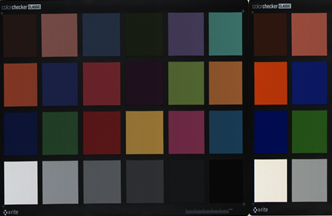 Big Data was a BIG buzzword last year, but reaching your 2015 product quality goals is all about this question: Are you collecting the RIGHT data?
Big Data was a BIG buzzword last year, but reaching your 2015 product quality goals is all about this question: Are you collecting the RIGHT data?
Day-to-day manufacturing data can help improve product quality, but simply collecting big data sets isn’t sufficient. You need the right variables, measured often enough, and you may need weeks or months of data across different seasons.
Build your data collection plan today to have peace of mind that your data is accumulating properly and will yield helpful insights this year. For some extra guidance, book a free assessment with one of our engineers. Here are 3 key things to consider:
1. Measure the Right Variables
When product quality problems happen, the fingerprint of the problem will show up in the data…if the variables that affect the product quality are being recorded. To generate a complete list of variables, one approach is to think through the physical flow of material from ingredient delivery to finished product shipment. Consider the following areas:
- Raw material data from suppliers or in-house testing
- Measured variables in each unit operation
- Plant services like chilled water and steam
- Environmental variables such as temperature and humidity in storage and manufacturing areas
- Finished-product quality variables measured in manufacturing and in the QA lab
Another angle is to consider the viewpoints of different stakeholders: process operators and engineers, QA technicians, R&D chemists, customer service representatives. You may come up with a long list of variables, but resist the temptation to exclude variables that are “obviously” not important. We’ve seen several examples over the years where “unimportant” variables contained key information.
2. Measure the Right Variables Often Enough
How often to record data is another consideration. The general wisdom for industrial plants is to sample 20 times faster than the dominant time constant so you get 80-100 samples during the process settling time. For periodic signals, sample them at least twice as often as the highest frequency oscillation to avoid aliasing.
Conversely, measuring too frequently just fills your databases with many duplicated values and makes analysis more complicated than necessary. Some variables only need to be measured once per shift or once per day, and others every hour or minute. Also check your data compression settings. Compression can distort the correlation patterns between variables, leading to false conclusions.
3. Measure the Right Variables for Long Enough
So how long is long enough? That depends on your analysis goals and your list of variables. The great thing about collecting day-to-day manufacturing data is that it naturally contains sources of variation, like the changing of the seasons, that are hard to include in an efficient design of experiments. Many processes are affected by extreme weather because heating and cooling systems don’t have enough capacity or because materials are stored in areas without environmental controls.
Of course, there are some downsides to collecting data for months or years. You will need to clean up the data for analysis by eliminating periods of downtime, annual maintenance, etc. You will need to decide how far back the data is relevant. If you’ve switched suppliers or replaced equipment then the prior data may not be helpful unless you suspect the new equipment or supplier has caused a problem.
A long data collection period is helpful for diagnosing gradual drifts in quality, yield and efficiency, but for an acute problem, less is more. At a minimum, you need some data from before and after the problem began. For an intermittent issue, a short time window containing periods of good and bad product quality should be sufficient.
Build your plan and book an assessment
Improving product quality sometimes requires months of data, and simply having big data sets isn’t sufficient for finding the insights you need. For each of your 2015 product quality goals, ensure you’re recording the right variables often enough, and start soon.
We’re here to help – our engineers have been through this data planning exercise for many manufacturing processes. To get an expert opinion on your data collection plan, book a free assessment We look forward to hearing from you!




